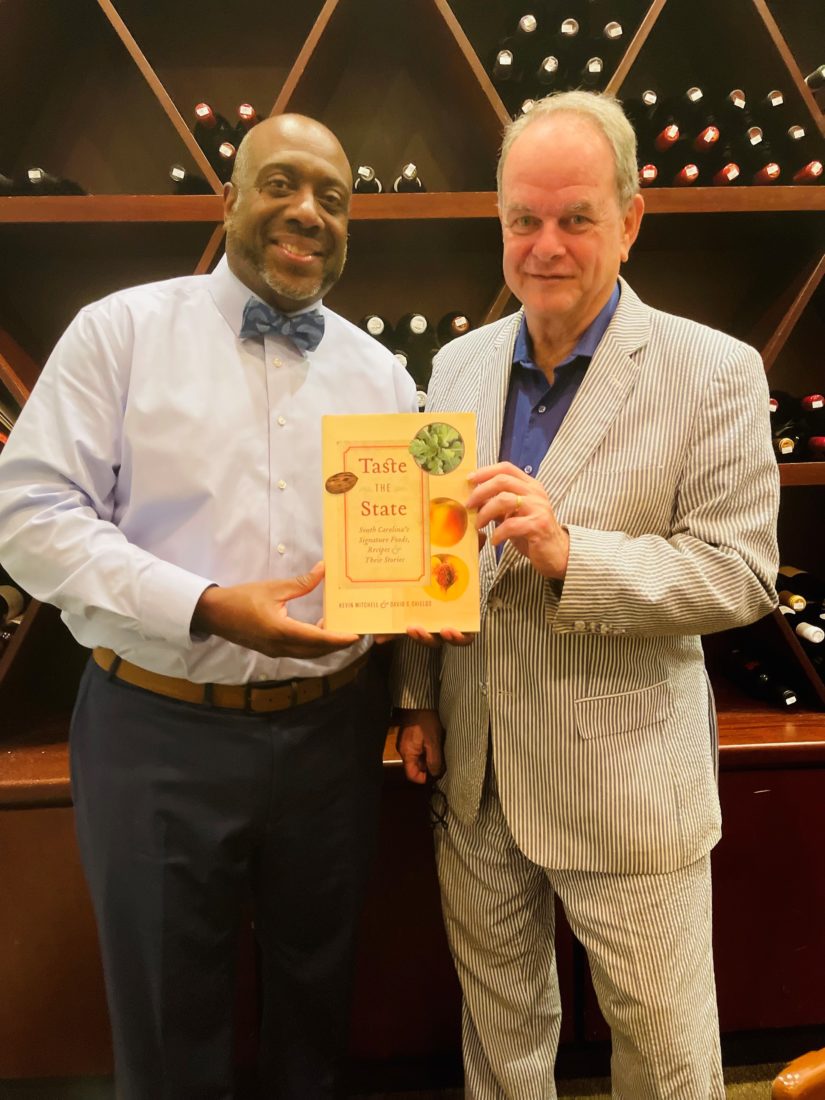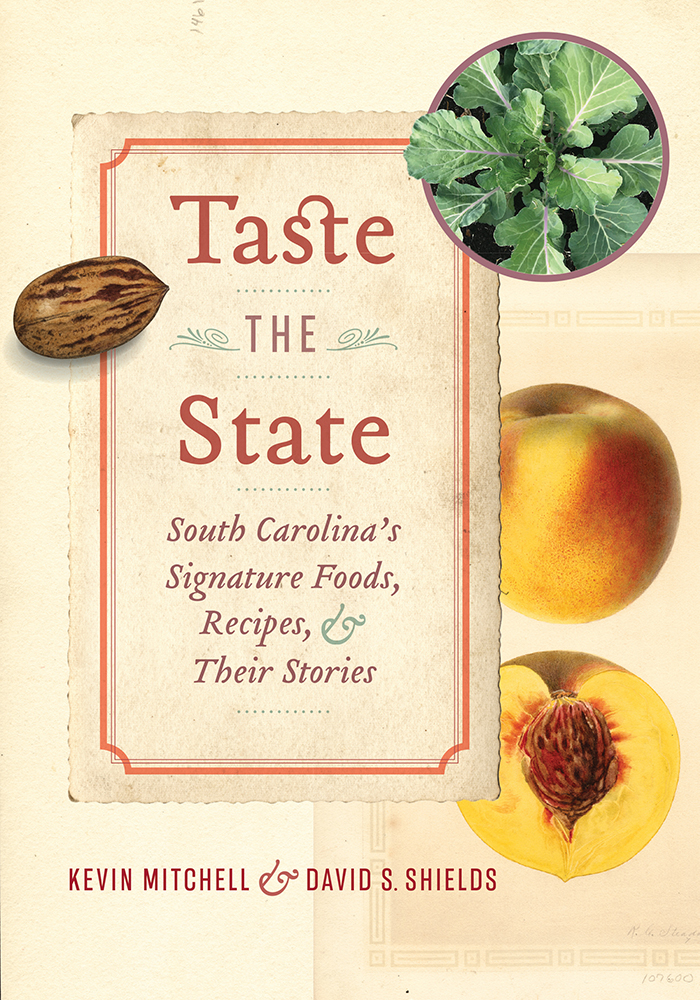Maybe you never associated asparagus with the Lowcountry. Perhaps you’ve never heard of a groundnut cake. And possibly you think pimento cheese owes its creamy existence to South Carolina (actually, pimento peppers have a stronger connection to Georgia). A new book from chef Kevin Mitchell and culinary historian David S. Shields, Taste the State: South Carolina’s Signature Foods, Recipes, and their Stories is full of surprises and revelations as it traces the evolution of more than eighty ingredients and dishes that have a long history in the Palmetto State.
“As David and I put together the list, it became this cool conversation around South Carolina food, beyond what most people would associate with Lowcountry cooking,” Mitchell says. The pair, who have partnered before on events such as Nat Fuller’s Feast in Charleston in 2015 (a dinner commemorating a 1865 feast hosted by the Black caterer to celebrate Emancipation and the end of the Civil War), worked together to pare down hundreds of ingredient and dish possibilities to those that appear in the book. “We were both deeply invested in the research, in the stories, and in finding great recipes,” Shields says.

In line with Shields’s academic interest in culinary history, there are heirloom recipes aplenty, including rice fritters from 1830, an 1876 predecessor of mac and cheese, and blackberry cobbler from 1908. The older recipes often omit cooking times, heats, and exact ingredient amounts; as Shields and Mitchell write in the preface, “there is sometimes a presumption that readers know their way around a stove.”
Meanwhile, Mitchell’s skills in the kitchen bring fresh takes to traditional ingredients. “We wanted to show the evolution of recipes, how they’ve changed since the 1800s, and how you can look at an ingredient in 2021 and use it in a whole new way,” Mitchell says. He includes his own contemporary spins such as hoppin’ John and tomato okra fritters, she-crab soup, and, most personally, a one-pot dish of black-eyed peas and greens. “Black-eyed peas were the first thing my grandmother taught me to make when I was six years old,” Mitchell remembers. “And understanding that Charleston was an important port city with access to spices from other parts of the world, this dish also includes things like turmeric and curry.”
From the well-known and well-celebrated (catfish, Duke’s mayo, Carolina gold rice) to the less familiar (pine bark stew, porgy, Lady Baltimore cake), the ingredients and dishes Mitchell and Shields include showcase those who had a hand in South Carolina’s mixing pot. “Food is attached to people, and we pay homage to the French, to the English, to African Americans and Native Americans,” Mitchell says. “And I want people to get fired up, seek some of these ingredients out, and get in the kitchen.”








